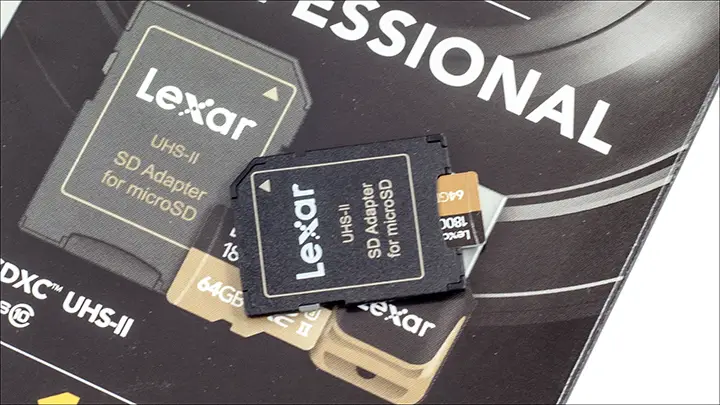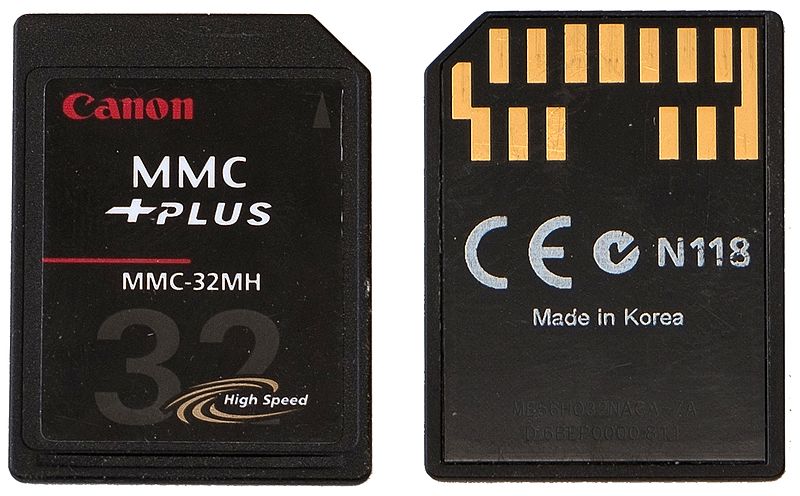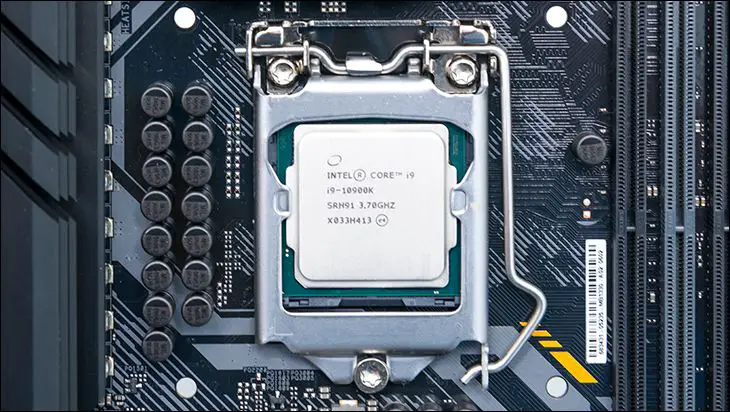 Much like CompactFlash was not developed in a bubble, and rather was a ‘new’ standard based upon previous work, so too is SecureDigital an evolution of an older standard. Unlike CF though, SD is not based on a hard drive standard and rather in 1999 the SecureDigital Card Association took the existing MultiMediaCards (MMC) standard and modified it to suit their needs.
Much like CompactFlash was not developed in a bubble, and rather was a ‘new’ standard based upon previous work, so too is SecureDigital an evolution of an older standard. Unlike CF though, SD is not based on a hard drive standard and rather in 1999 the SecureDigital Card Association took the existing MultiMediaCards (MMC) standard and modified it to suit their needs.
Though it is more accurate to say that they took the ancient MMC standard and up ‘evolved’ it to make a more modern standard, rather than say they revised it – as the SDA extensively reworked the standard until very little was left beyond core ideals. Basically both standards are serial based designs, both were originally designed with Digital Rights Management baked right into the standard, and both were meant to compete against Sony and their Memory Stick standard.
Beyond these basics both radically differ in their implementation. The first and largest change was SanDisk, Toshiba, and Matsushita made the SD standard a keyed standard in that it could only physically be inserted one way – unlike MMC which could be inserted ‘upside down’ but only work in the proper orientation. The next change was the SD card standard was made thicker at 2.1mm instead of 1.4mm that MMC used. At the same time, it was also made smaller (32x24x2.1mm) but used recessed interface contacts. This combination not only made it more portable and sturdy, it also allowed for more common (read cheaper) form-factor NAND IC’s as well as higher performance controllers to fit inside.
Lastly the SD standard was developed with future performance growth and development in mind. So much so that ‘SD cards’ of today share little in common with their Millennium counterparts! For example, revision 2.0 (in 2006) of the SD standard introduced SDHC which included the High Speed bus interface, and capacities of up to 32GB. Then in 2009 SDXC (aka version 3.01 of the SD standard) was released and introduced the Ultra High Speed bus (AKA UHS-I) to the world. This standard increased capacity to 2TB, and boosted speeds from 25MB/s to either 50MB/s (SDR50/DDR50) or 104MB/s (SDR104/DDR104).
The latest standard is version 4.0 and while it was announced in 2011 only recently has started to become widely available. Dubbed UHS-II this new standard boosted speeds to 312MB/s. However much like ‘MMCplus’ standard that it bares more than a passing resemblance too, in order to boost performance to this new level the interface itself had to be modified. In a wise decision backwards compatibility was kept and instead of an entirely new interface, an additional row of contacts was simply added behind the existing UHS-I contacts. Much like in USB 3.0, or even MMCPlus storage devices, this double row allows both the host system and the device itself to instantly know which mode to use (High speed / UHS-I, or UHS-II).
 This of course means that devices will have to have this additional row of contacts in order to make use of USH-II performance potential and this time this is a rather limited pool of devices! On the positive side all UHS-II cards can be used in any device that is capable of handling its capacity size.
This of course means that devices will have to have this additional row of contacts in order to make use of USH-II performance potential and this time this is a rather limited pool of devices! On the positive side all UHS-II cards can be used in any device that is capable of handling its capacity size.
There is however one complication, when the SDA introduced version 4 of the standard they also tweaked the UHS-I standard that UHS-II devices make use of. Basically instead of 104MB/s compatible UHS-II cards are capable of running at 156MB/s over the UHS-I bus. On the surface this should be a good thing, but many first generation UHS-II cards used controllers which were unable to step down to the ‘normal’ highest UHS-I mode; instead they were capable of UHS-II speeds, ‘improved’ UHS-I speeds, or limited to the slower UHS-I DDR50 bus standard of 50MB/s. For example, SanDisk’s Extreme Pro 1866X series is such a device and in the real world can be an actual step back for many consumers when used with their existing devices that don’t support the improved UHS-I or UHS-II standards!
Crucial and Lexar on the other hand actually were interested in creating useful devices instead of PR points; so while it has taken them longer to market UHS-II devices there latest is not only some of the fastest UHS-II cards on the market they are also some of the fastest UHS-I models! This card works on UHS-II, UHS-I (revision 4), UHS-I (revision 3 and 3.01), and High Speed (revision 2) devices.
In other words, the 2000x pretty much is the epitome of ‘future proofing’ in that the performance they offer consumers now is excellent and as the consumer upgrades to newer portable devices the existing cards will also be more capable. Brilliant stuff.













